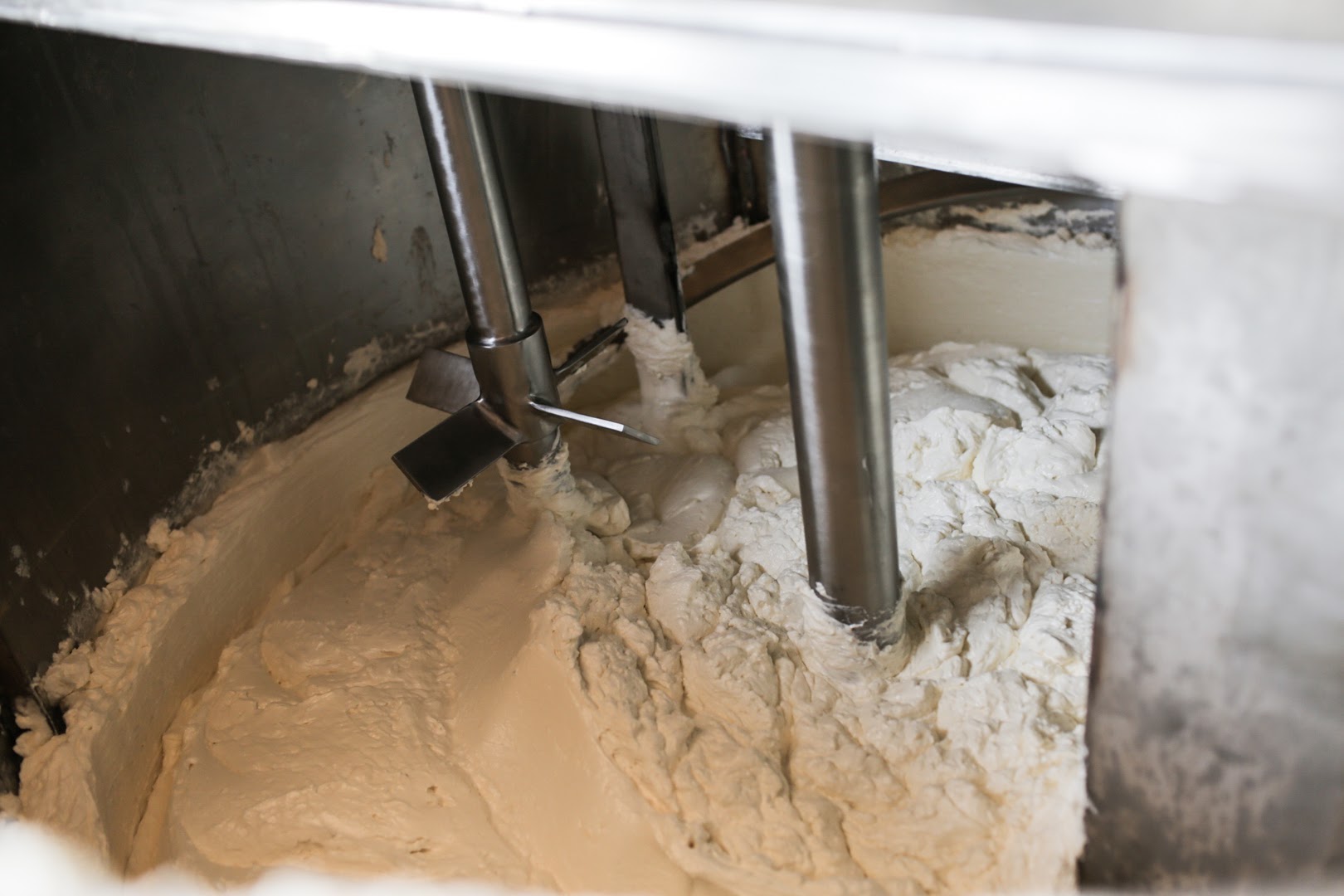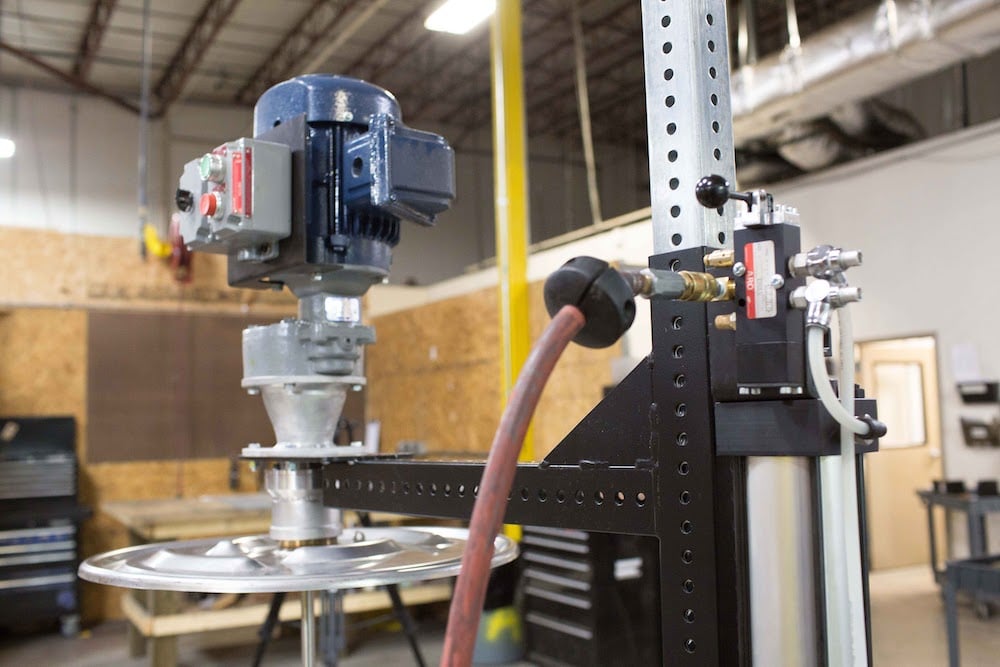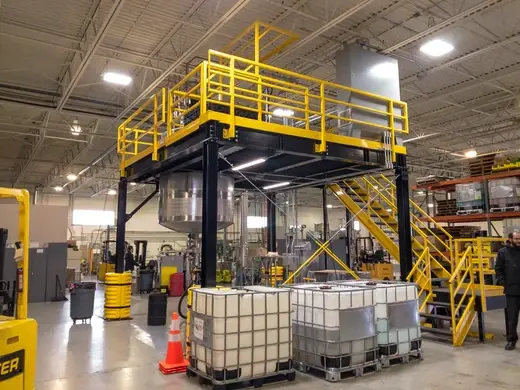Back to the Basics of Mixers: Flow & Shear
You’ve decided you need to upgrade to an industrial mixer. That's great, but where to start? You have impellers, shafts, motors, and mounts to...
Three basic flow patterns exist in industrial mixing: rotational flow, an axial flow, or a radial flow.

Rotational flow is usually avoided or limited. With rotational flow, the mixture moves around the shaft of the mixer without really getting mixed. If you dropped a ball into a tank mixing water with a rotational flow, the ball would essentially orbit the shaft of the mixer without moving up or down in the container. Rotational flow spins liquids around the without mixing them. However, rotational flow can break the surface tension of the mixture by creating a vortex. This can be used helpful for adding other liquids and solids into the mixture.

Axial flow is the most efficient flow for bulk blending. With axial flow, the individual blades on the propeller are angled downward. When the blade spins, it pushes the mixture down towards the bottom of the tank. As the mixture hits the bottom of the tank, it bounces off and moves towards the sides of the tank. The continued force of the moving blade moves the mixture up the sides of the tank, and then begins to recirculate as the spinning blade pulls in the mixture from above. This type of flow provides great mixing for a wide range of conditions. Also, if you are looking for a way to suspend solids in a liquid mixture (think of suspending sugar in hot tea in order to give it time to melt) this is the kind of flow you’ll want.


Finally, radial flow pushes the mixture out towards the side of the tank. Part of the mixture hits the side of the tank and moves downward, while the other part hits the side of the tank and moves upward. Radial flow mixing is great for intense mixing needs like when you need to break down the molecular bonds of the items that you are mixing. Also, radial flow generally has a slower blending time than axial flow.
Read more about flow and shear here. Once you know what kind of flow works best for your process, you’ll want to choose the right impeller type in order to achieve that flow.

You’ve decided you need to upgrade to an industrial mixer. That's great, but where to start? You have impellers, shafts, motors, and mounts to...

Once you have your impeller, motor, and shaft you’ll need to mount the mixer to the container or set up a stand where you can lower the mixer in and...

Without industrial mixers, numerous industries would not have sufficient product to meet demand. The availability of both batch and continuous mixers...